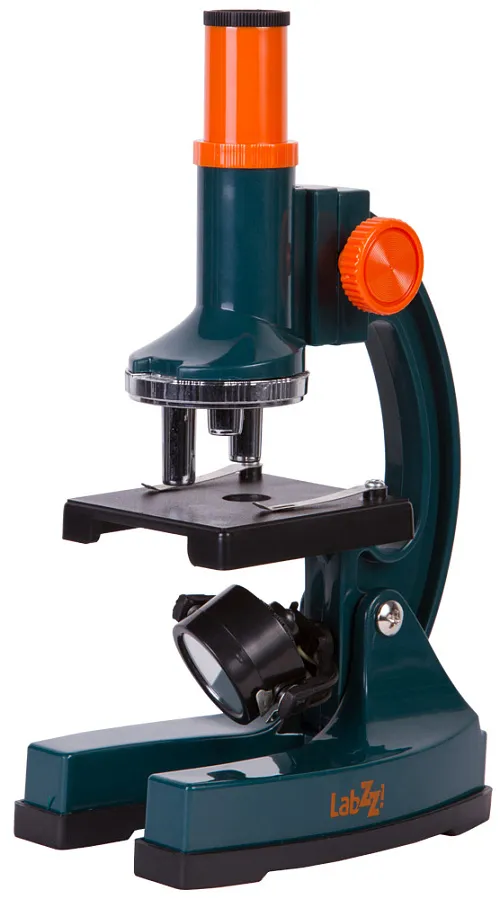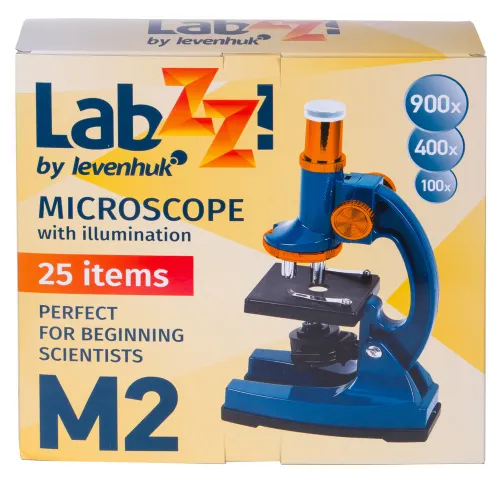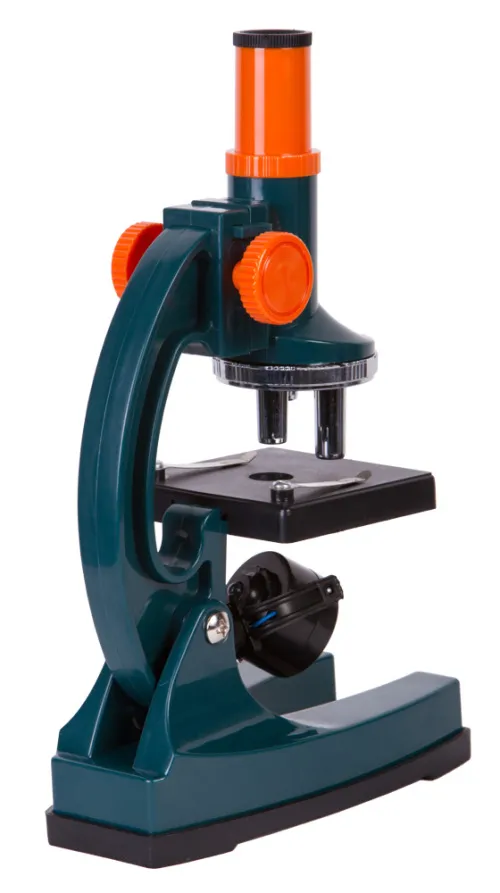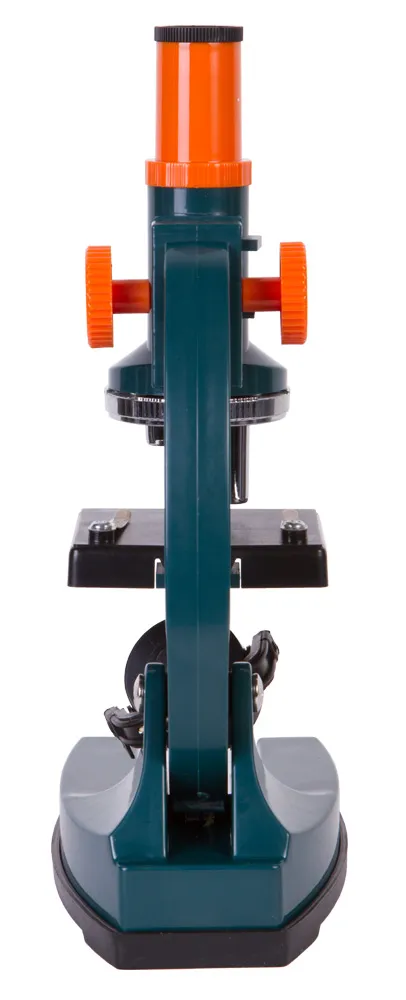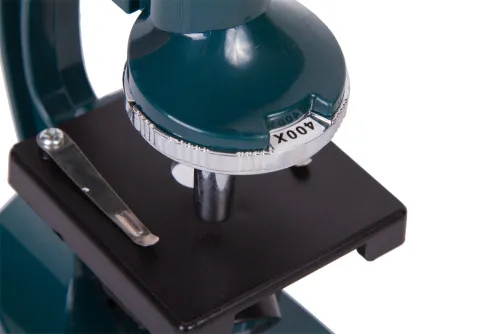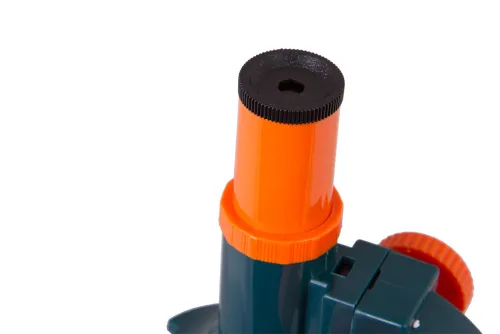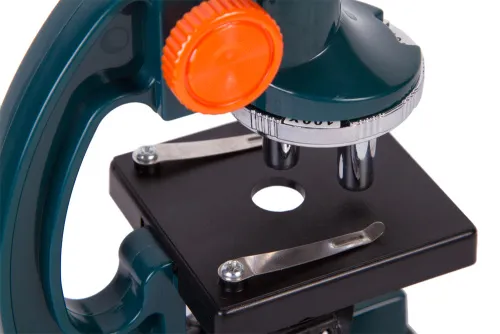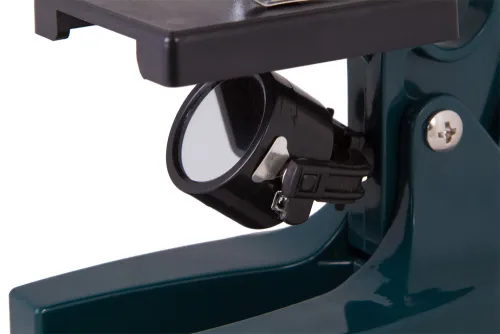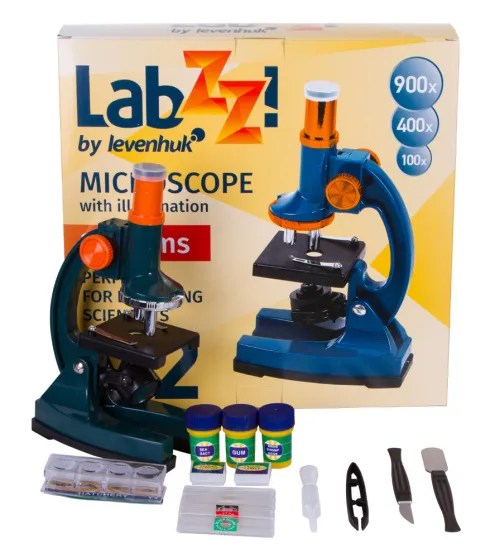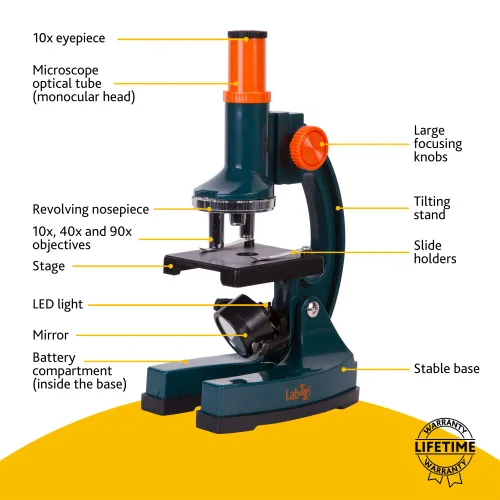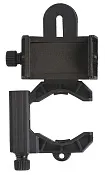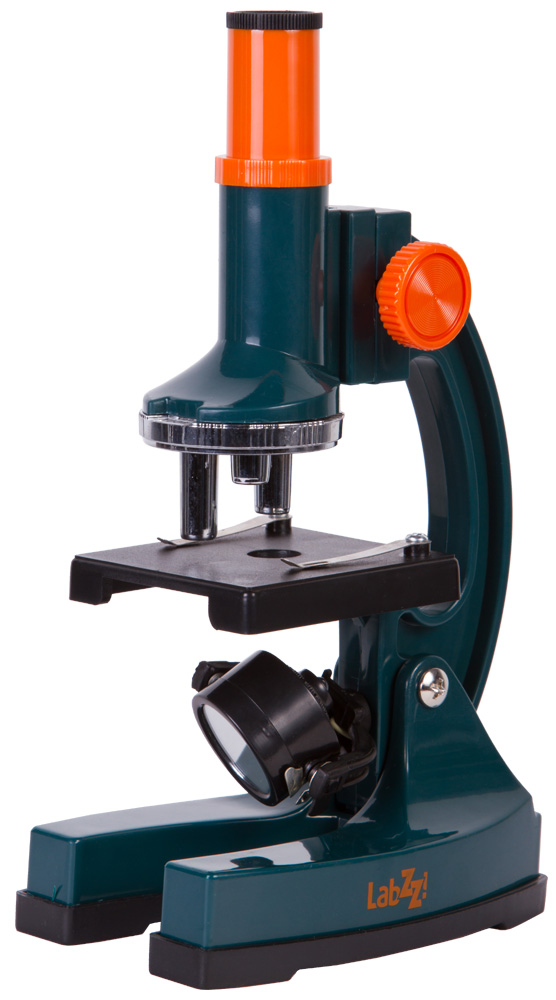Levenhuk LabZZ M2 Microscope
Magnification: 100–900x. Experiment kit included
| Product ID | 69740 |
| Brand | Levenhuk, Inc., USA |
| Warranty | lifetime |
| EAN | 5905555011486 |
| Package size (LxWxH) | 8x28x29 cm |
| Shipping Weight | 0.444 kg |
Levenhuk LabZZ M2 Microscope is a great instrument for a young biologist. The microscope is very easy to use; it allows for studying transparent microscope samples, and also comes with an interesting experiment kit. A kid will be able to observe ready-to-use microscope slides and watch Artemia’s growth in a hatchery. The kit also includes special tools for independent preparation of microscope samples.
Levenhuk LabZZ M2 Microscope has a revolving nosepiece equipped with three objective lenses. The lenses come pre-installed. These lenses enable you to obtain several fixed magnifications in the 100x–900x range. Illumination is located below the stage. You can choose a mirror or LED – the illumination unit rotates around its axis.
The stage is equipped with special metal clips for sample fixation. Focusing is carried out by means of a separate knob. Illumination runs on batteries (not included). The body is lightweight–made of reliable plastic. The microscope with all the enclosures is packed in a bright colorful box.
Features:
- Children’s microscope
- Magnification up to 900x
- Experiment kit included
- Lightweight plastic body
- Illumination: mirror or LED
The kit includes:
- Microscope
- Eyepiece
- Pipette
- Prepared slides (3 pcs)
- Blank slides (3 pcs)
- Cover slips (6 pcs)
- Slide stickers (6 pcs)
- Glue
- Sea salt
- Flask with brine shrimp
- Brine shrimp hatchery
- Spatula
- Scalpel
- Pestle
Levenhuk LabZZ M2 Microscope is not compatible with Levenhuk digital cameras due to non-standard 17-mm eyepiece tube diameter.
| Product ID | 69740 |
| Brand | Levenhuk, Inc., USA |
| Warranty | lifetime |
| EAN | 5905555011486 |
| Package size (LxWxH) | 8x28x29 cm |
| Shipping Weight | 0.444 kg |
| Type | biological, light/optical |
| Microscope head type | monocular |
| Optics material | optical polymer glass |
| Head | fixed (non-rotatable) |
| Head inclination angle | not angled |
| Magnification, x | 100 — 900 |
| Eyepiece tube diameter, mm | 17 |
| Eyepieces | 10x |
| Objectives | 10x, 40x, 90x |
| Revolving nosepiece | for 3 objectives |
| Stage, mm | 60x65 |
| Stage moving range, mm | fixed |
| Stage features | with clips |
| Focus | coarse |
| Body | plastic |
| Illumination | mirror, LED |
| Power supply | 2 AA batteries (not included) |
| Power supply: batteries/built-in battery | yes |
| User level | elementary |
| Assembly and installation difficulty level | extremely simple |
| Application | elementary |
| Illumination location | lower |
| Research method | bright field |
| Experiment kit included | ✓ |
We have gathered answers to the most frequently asked questions to help you sort things out
Find out why studying eyes under a microscope is entertaining; how insects’ and arachnids’ eyes differ and what the best way is to observe such an interesting specimen
Read this review to learn how to observe human hair, what different hair looks like under a microscope and what magnification is required for observations
Learn what a numerical aperture is and how to choose a suitable objective lens for your microscope here
Learn what a spider looks like under microscope, when the best time is to take photos of it, how to study it properly at magnification and more interesting facts about observing insects and arachnids
This review for beginner explorers of the micro world introduces you to the optical, illuminating and mechanical parts of a microscope and their functions
Short article about Paramecium caudatum - a microorganism that is interesting to observe through any microscope

